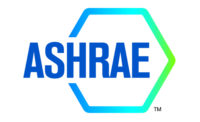That's equal to the energy used by 840,000 households, according to the EPA. "Improving the energy efficiency of laboratories requires a 'whole building' approach, focusing on improving the efficiency of the entire facility instead of individual components," Geoffrey Bell said. "Improving the efficiency of specific components without examining their relation to the entire system can eliminate opportunities to make other more significant improvements in energy efficiency."
Laboratories for the 21st Century: High-Performance, Low-Energy Design will be offered by the ASHRAE Learning Institute at ASHRAE's 2004 Annual Meeting, June 26-30, Nashville, TN. The professional development seminar will be held from 8 a.m.-3 p.m. Saturday, June 26.
The course is based on the Labs21 program, developed by the EPA and U.S. Department of Energy. Laboratories use five to 10 times more energy per square foot than office buildings. Some specialty laboratories, such as cleanrooms, consume as much as 100 times more energy of a similar sized building, according to the EPA.
Such high-energy usage results from systems that require large volumes of ventilation air needed to meet safety requirements and building codes. "Architects, engineers and other building professionals must design and construct the next generation of laboratories that incorporate energy efficiency, renewable energy sources and sustainable construction practices," Bell, one of the seminar instructors, said. Bell is a Lawrence Berkeley National Laboratory energy engineer with the core Labs21 planning committee. As part of the seminar, Bell will present Lab21's recommendations for the design process:
- Pursue a whole-building approach to design;
- Insist on "right sized" mechanical and distribution systems;
- Plan architectural features and adjacencies with mechanical system requirements in mind;
- Try to isolate office and other support spaces from lab modules;
- Select architectural and engineering professionals with laboratory experience and a proven record of sustainable design;
The cost of Laboratories for the 21st Century: High Performance, Low-Energy Design is $450 ($350 ASHRAE members). Attendees will earn six professional development hours. To register, visit the "ASHRAE Learning Institute" shortcut on ASHRAE.org or contact ASHRAE Customer Service at 800-527-4723 (United States and Canada) or 404-636-8400 (worldwide), fax 404-321-5478, by mail at 1791 Tullie Circle NE, Atlanta, GA 30329.
Registration for the 2004 ASHRAE Annual Meeting is $580 ($340, ASHRAE member) prior to May 21. After May 21, the registration fee will be $680 ($440, ASHRAE members). For more information or to register, visit ASHRAE.org.




